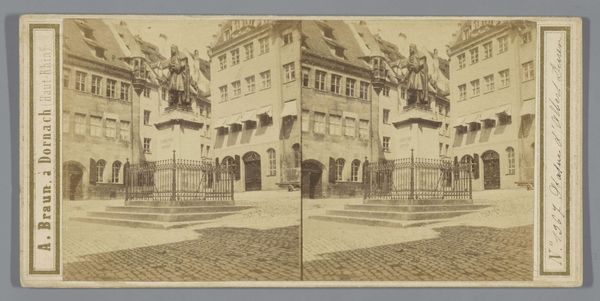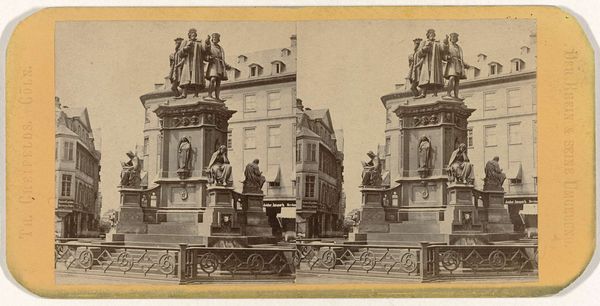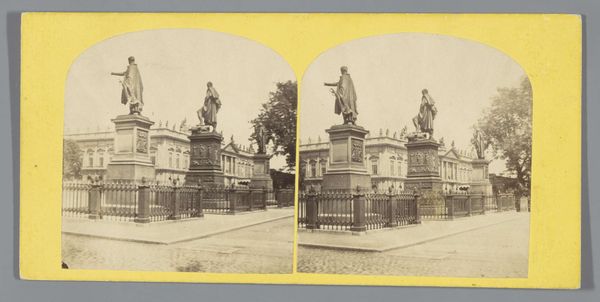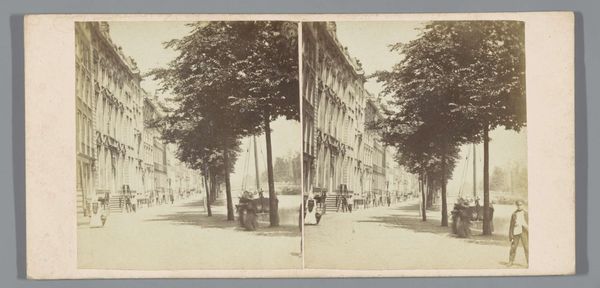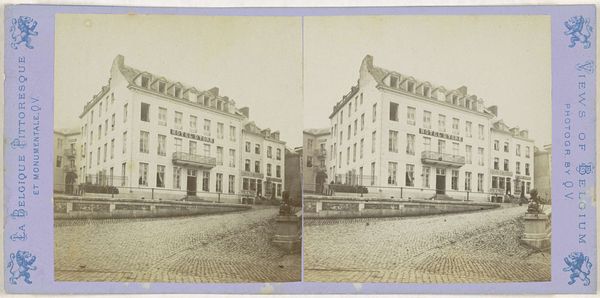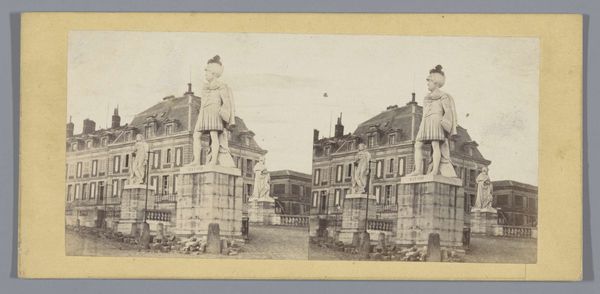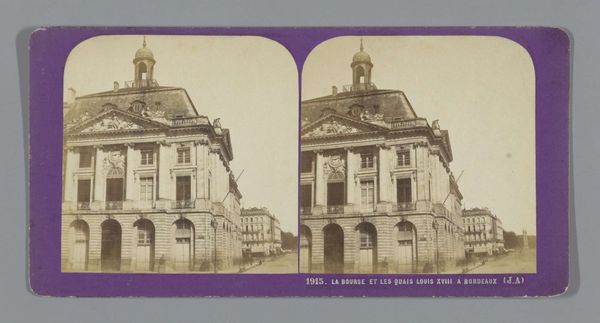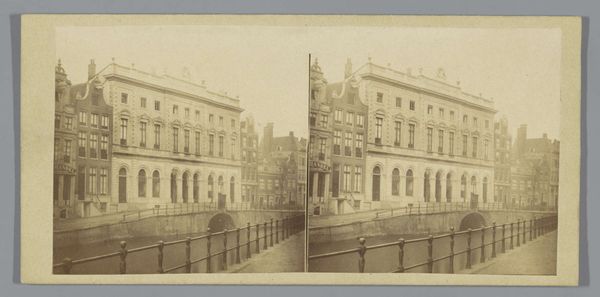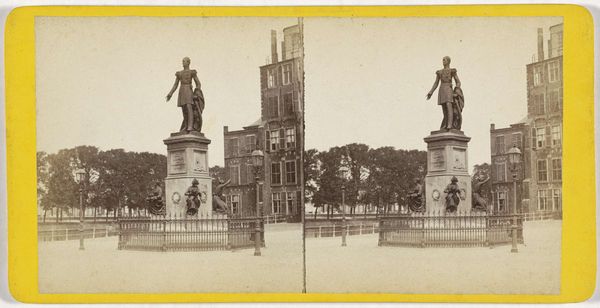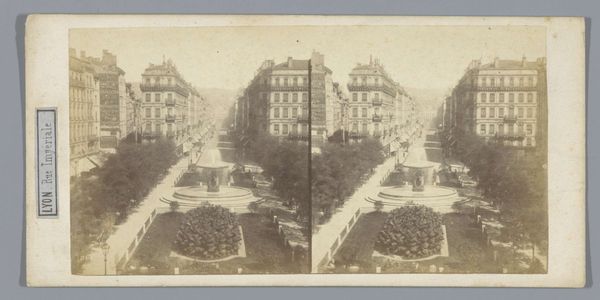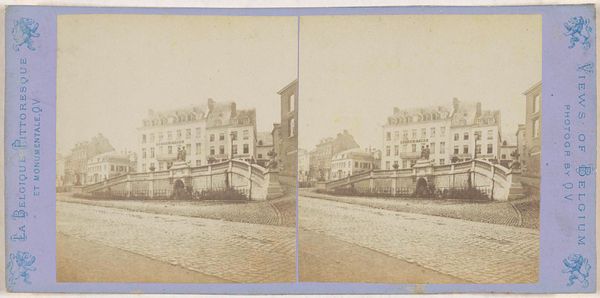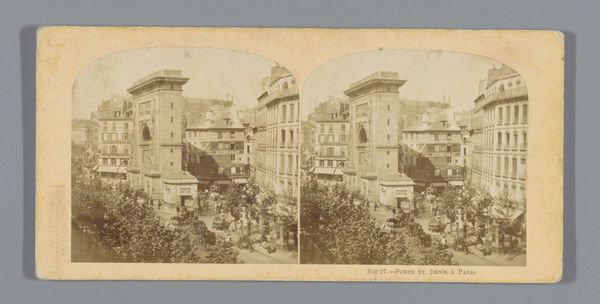
Standbeeld door David d'Angers op het Place Gutenberg in Straatsburg c. 1850 - 1880
0:00
0:00
photography, sculpture
#
portrait
#
statue
#
neoclassicism
#
photography
#
coloured pencil
#
sculpture
#
cityscape
Dimensions: height 87 mm, width 174 mm
Copyright: Rijks Museum: Open Domain
Curator: This stereo card captures a moment in Strasbourg, circa 1850-1880, presenting David d’Angers’ statue on Place Gutenberg. What are your first thoughts? Editor: Austerity. This lone statue, fenced off like a historical artifact needing protection, tells a story about how public spaces and narratives are curated, almost controlled, through memory. It feels sterile, like a diorama more than a vibrant community hub. Curator: Precisely. Statues in town squares serve as potent symbols. The statue on Place Gutenberg becomes a focal point through which narratives are built, sustained, and even challenged by a town over time. Look at the subject's garb. See how he’s presenting the printing press. He’s holding what is supposed to be revolutionary power in his hands. Editor: Absolutely, and the timing of the photograph—decades after Gutenberg’s invention—reveals how societies monumentalize progress… but also perhaps, neutralize its more radical potential. The printing press changed the game regarding whose voices mattered; has the monument further cemented a traditional, authoritative structure? Is this an attempt at symbolically assimilating disruptive power? Curator: It’s fascinating to consider the many layers of meaning in the presentation of this moment! Beyond its aesthetic appeal, the statue also serves a practical and psychological function: the town square embodies stability, order, and permanence. Consider the careful construction of this portrait through sharp contrasts and symmetrical organization of compositional elements; such calculated composition adds to that permanence. Editor: And speaking of "permanence," I notice how the wrought-iron fence, ostensibly intended to "protect," also creates a kind of social distance. In whose interest is the historical narrative preserved? Do marginalized communities access these spaces equally? Or is this symbolic preservation subtly reinforcing exclusivity? I wonder who felt invited into this space, then and now. Curator: Indeed. Cultural artifacts, particularly ones prominently presented to the public in central community hubs, deserve this layered questioning. Now I find myself reassessing even my understanding of its original purpose. Editor: Exactly! Every photograph, every statue is a political document worthy of critical reflection! It demands that we confront how art actively shapes, and sometimes misses the mark with community narratives.
Comments
No comments
Be the first to comment and join the conversation on the ultimate creative platform.
